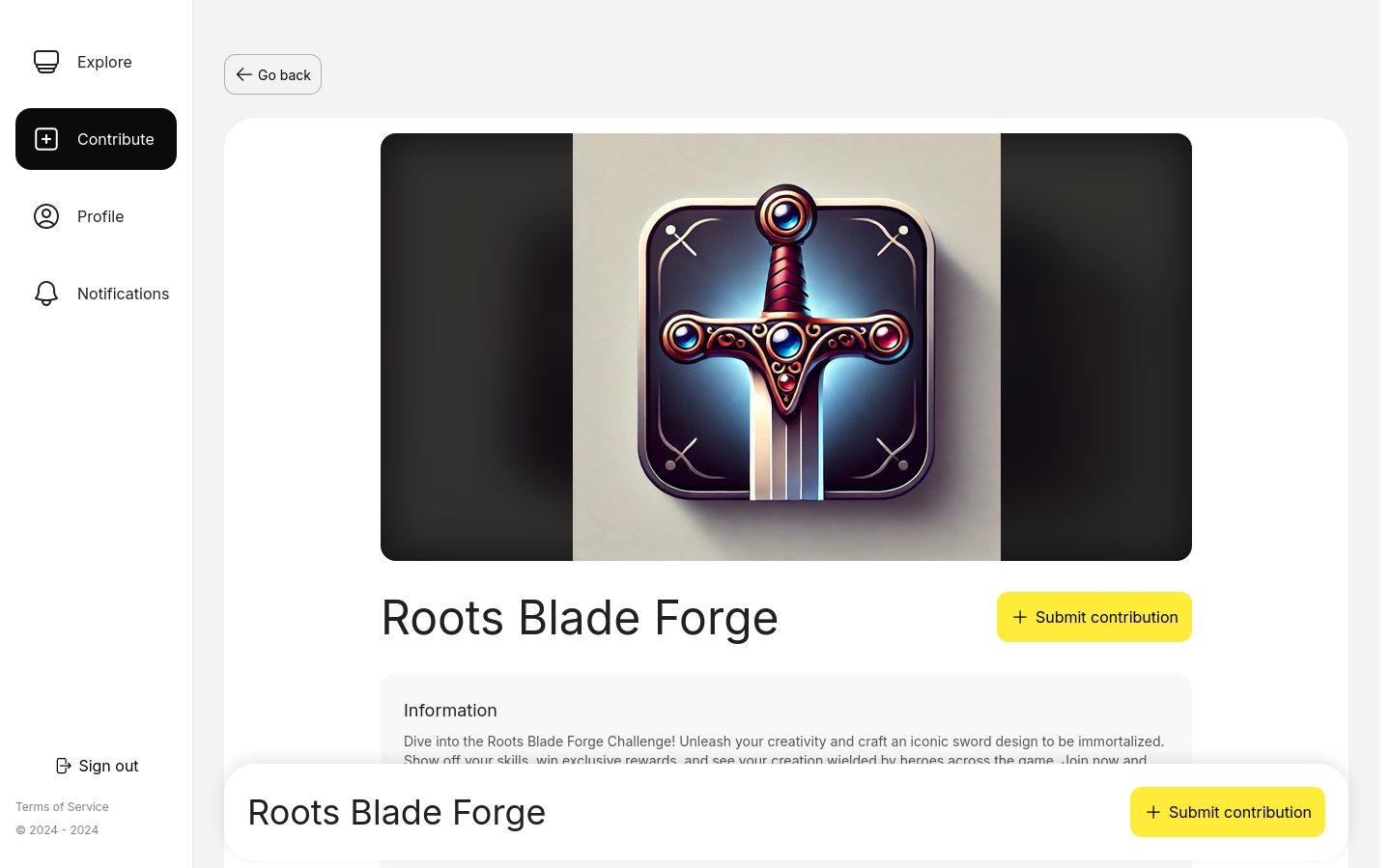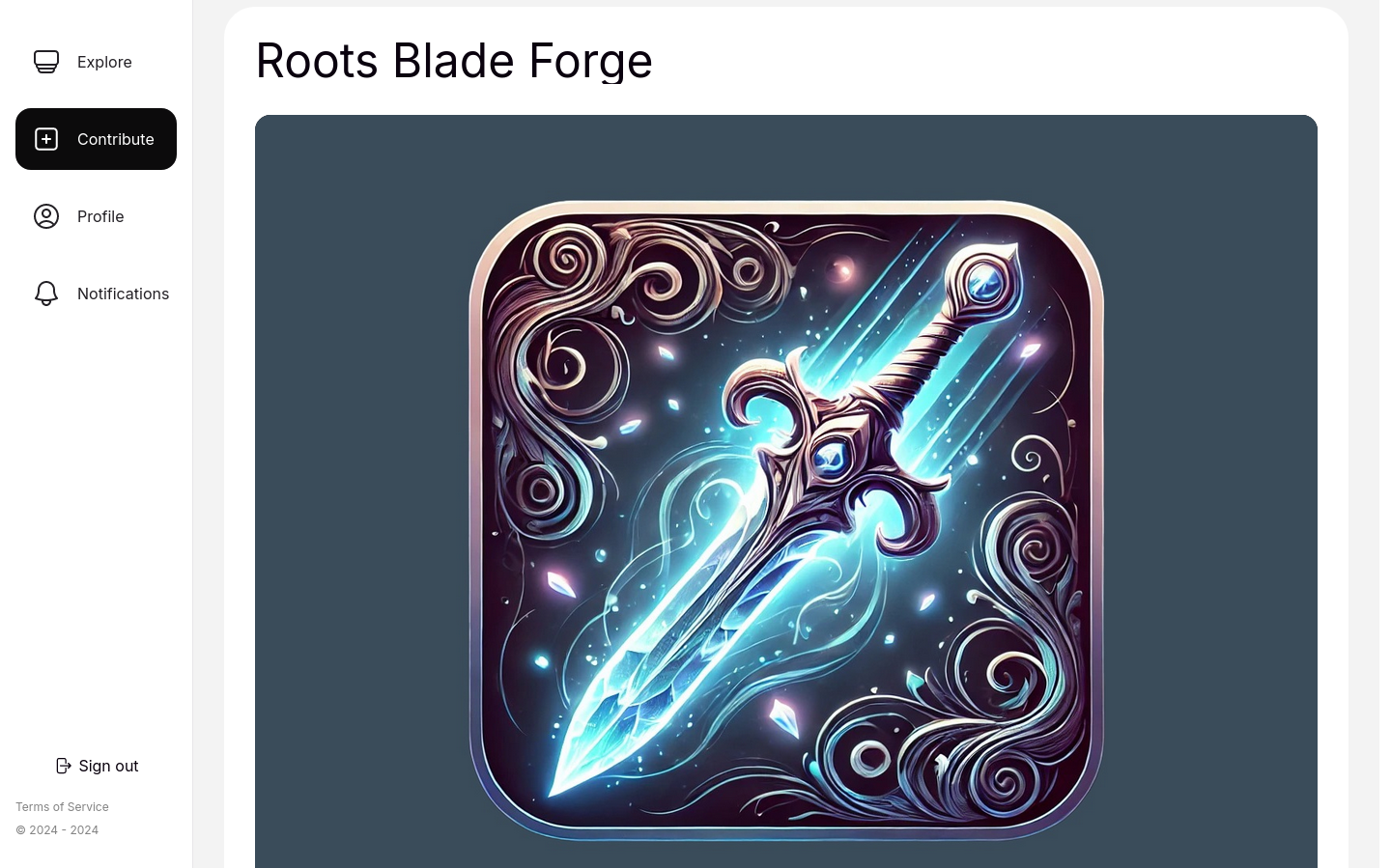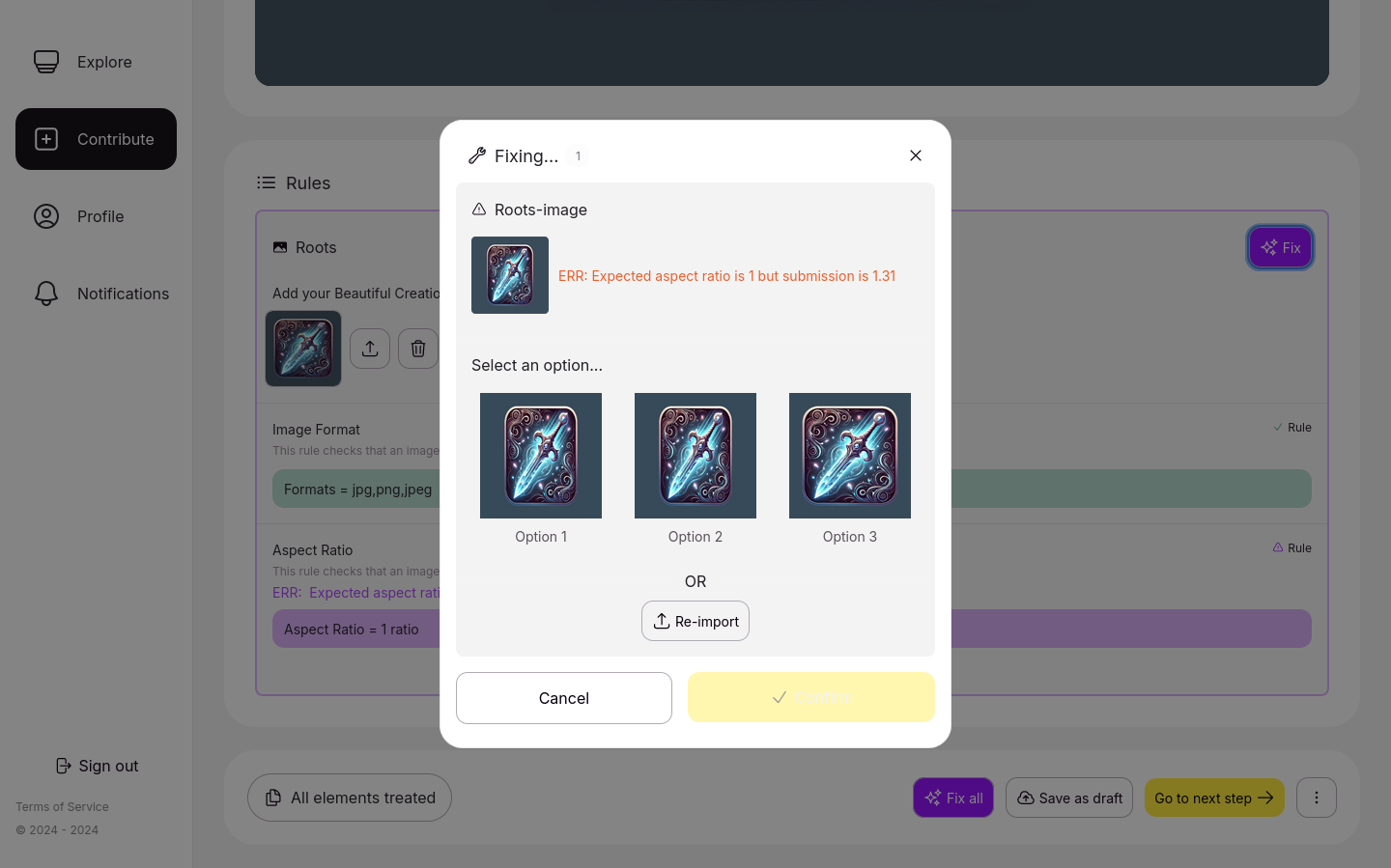Setup & Submission flows
PlayMakers is not currently released for productive usage. The material below is a preview reference.
Please contact us to get started.
The flow diagram below gives an overview of all the UGC steps with PlayMakers.
Setting up in a dashboard
Specify
Assuming a project has already been created, a studio owner can create constribution schemas. Beyond the pure technical requirements for the submissions, we can also specify at this time the rewarding mechanism, tutorials, extra hand-written documentation or additional support assets.
More detailed in the Setup a Schema section.
Converting consumers to creators
Raise awareness
Although optional, it is recommended to advertise the UGC flow to the community to at least raise the awareness of its existence. This can be achieved through various means, likely within the product itself or through social media, forums and chats already in activity.
With this in mind, PlayMakers can provide tools, templates and recommendations in this first step to success, planting the seed of UGC. PlayMakers's in-game social features help you get the word out by building a connected community in which you can promote UGC and incentivize others to collaborate.
Educate
Before creators can actually submit content, they need to learn:
- what and where they can contribute
- the expectations, as specified in the schema, but in a user-friendly manner
- for example, you can add a description in your schemas where you explain what you exactly expect from the potential creators and explicit the do's and don'ts. Be as clear as possible, you may have indeed a clear understanding about what you want others to contribute, but they may not!
- how to create, how to use a creative tool, how to achieve the requirements
- providing them with tutorials and ressources/assests is a good approach to do so, these can indeed give missing knowledge to the users, help them harness their skills further and thus, help your project be more accessible
After they submit content, they need to:
- Receive critics from their peers/you
- This can be done via comments and votes. The voting system makes them aware of how popular their project gets through time and the comments section of other users' satisfaction or mixed feelings, which can help them improve the quality of their contributions in the long run.
- Learn the amount of money generated thanks to their contribution(s) or at least the amount of money that they are entitled to receive. This step has to be done both beforehand and after their contribution has been validated.
Harvesting and filtering submissions
Submission state machine
A submission can go through several states:
draft: It can be saved in a temporary state, only visible by the creatorpendingValidation: The validation and correction flow is running- if it is rejected, it goes back to the draft state
- if it is approved, the submission is successfully submitted
submitted: The submission is technically valid and is now open for community votesrejected: The submission did not pass the community barrier, or was manually rejectedapproved: The submission was approved and is or will be implemented in the product
Note that some states will be added in a future update
pendingClaim: A third party sets a claim on the submission, and this is pending investigationclaimed: The third party won the argument, and, if the submission is approved, will receive the rewardschangeRequested: The studio requested modifications to be done by the creator on the submission
Uploading a submission
Creators can view all available contribution schemas provided by the studio. After selecting the appropriate schema for their
creation, they can proceed to upload their submission through the submission interface.

The submission interface allows creators to fill out a form, with different blocks corresponding to various components of their overall submission.

Instead, they have the possibility to import a zip file, as long as its content follows the proper naming convention or holds a valid json representation of the submission.

It is also possible to export a submission as a zip archive after PlayMakers's assessment reveals positive.
Validation and Correction
Once the creator is done providing the Submission through the Makers Hub, it can go through Barista to be validated and/or corrected. If the Makers Hub is hosted by PlayMakers, client validation and correction are enabled. This means that at least part of the contribution Schema is checked before the submission is even uploaded. This saves time, the creator being given quick immediate feedback; minimizes network usage, the creator does not have to upload an incorrect submission, download a correction attempt, and repeat; makes use of local compute.
If the validation fails, Barista will attempt to autocorrect the submission. Some items might be corrected without questions, some items might be corrected in various ways (through proposals offered to the creators), and unfortunately some items might require manual edits. A loop occurs until the submission fits with the Schema.

Once the validation passes, the submission is uploaded and the same checks are done again on the server side, to prevent malicious behavior. On top of that, additional checks and corrections might be done to cover rules that are too complex to compute in a web browser.
Once it passes the server validation, the submission becomes public and is subject to the community votes, next filter step.
Monitoring UGC
Monitoring UGC is essential.
Not only do studies show that UGC helps brands to connect with their audience and thus, raising their engagement and trust levels, but they also show that it tends to convert them into paying consummers. For example, Stackla Consumer Content Report indicated that nearly 80% of people say that UGC highly impacts their purchasing decisions. On the other hand, 59% of the people surveyed see UGC as the most authentic type of content.
That's why PlayMakers thought about it all and offers you the possibility to monitor UGC within the Studio Dashboard. This will be highly valuable for insights such as the number of contributions, the number of creators, the finacial data, the usage and other statistics.
Implementing in the product
Manual implementation
Through the Studio Dashboard, it is possible to download submissions individually, or as an archive batch. The integration in the product is then a manual step, and no prior work is needed to add the contribution. This is however an asynchronous method which doesn't scale well and requires constant work.
The recommended approach is one of the automated implementations below.
Automated implementation
Regular updates
In case the product distributes daily, weekly, or any other periodicity, updates, it is relevant to script the download of all new submissions and bundle them within each release.
Real-time
If the product has internet access, it is possible to allow the client to download new submissions immediately as they come:
- at launch: by starting a background process to update all the latest contributions
- on the go: polling every now and then, to check if there are novelties and grabbing them
Rewarding the creators
PlayMakers allows you to reward your (top) creators through your moderation dashboard. Several options are available to do so, note that it is also possible for you to cumulate many rewarding systems at the same time:
- Bounties
- Royalties
- In-game rewards
- Fixed payments
If you decided to financially reward your contributors, you can apply the revenue sharing that suits you best but like any other rewarding system, the users should find it attractive enough to feel like taking part in the creation process is worth their time.
Visit our page to learn more about selling in-game-user-generated cosmetics.